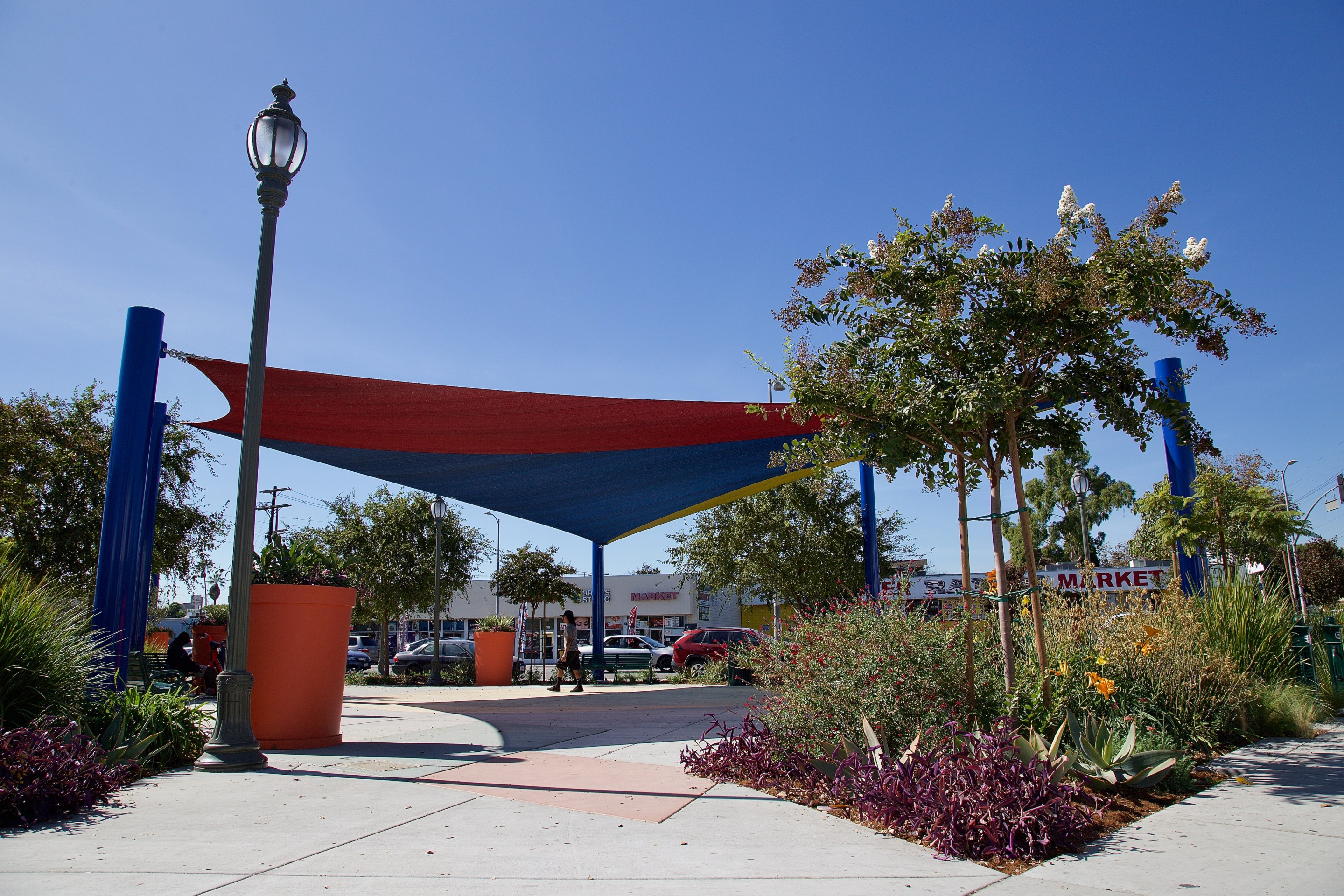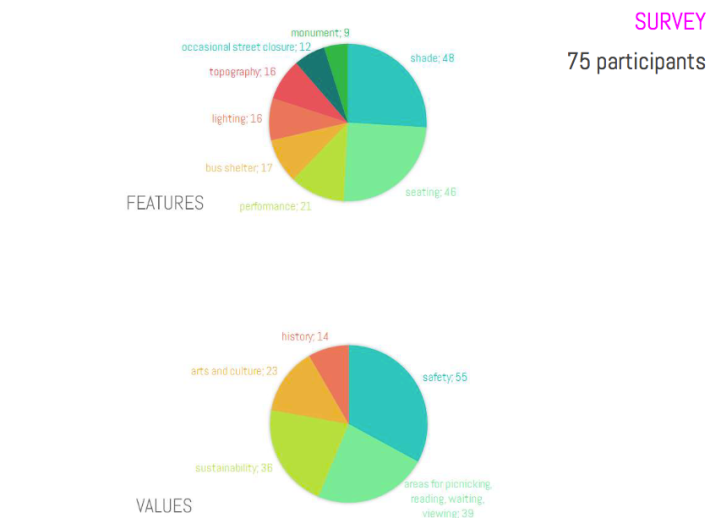When I first spotted what appeared to be a second effort to revamp the Hoover Triangle earlier this summer, my jaw dropped.
The Bureau of Street Services (BSS) had hauled in four massive trees, and thick blue poles meant to anchor canopies had appeared. When I stopped by to try to take pictures a few weeks later, BSS was busy installing planters and an array of greenery around the edges of the plaza. [See BSS installing the trees and some plants here.]
This was phase two, I was told.
Phase two?
Calling it phase two makes it sound like having to rip up concrete and rip out old new trees to install new new trees and new structures was always part of the plan. But the shade structures were not in the original plans, to the best of my understanding. Nor were they mentioned in any of the press materials (see here, here).
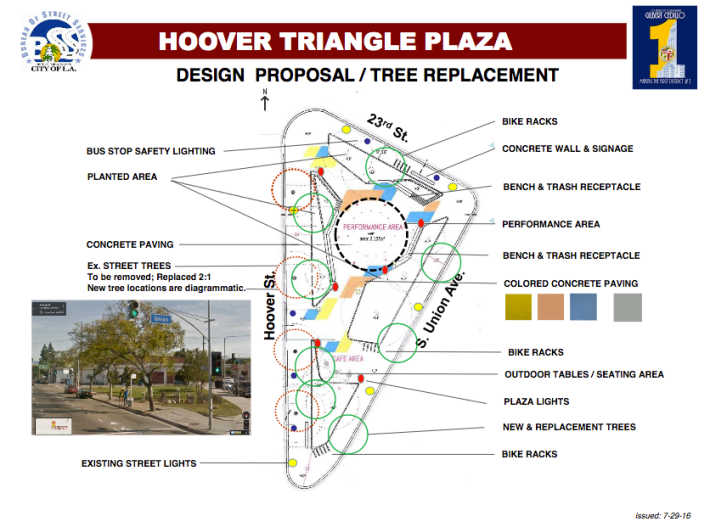
Instead, the first "phase" had cost nearly two years of planning and $600,000 in concrete, greenery, lighting, benches, and labor, all to yield profoundly underwhelming results, as we noted in 2017.
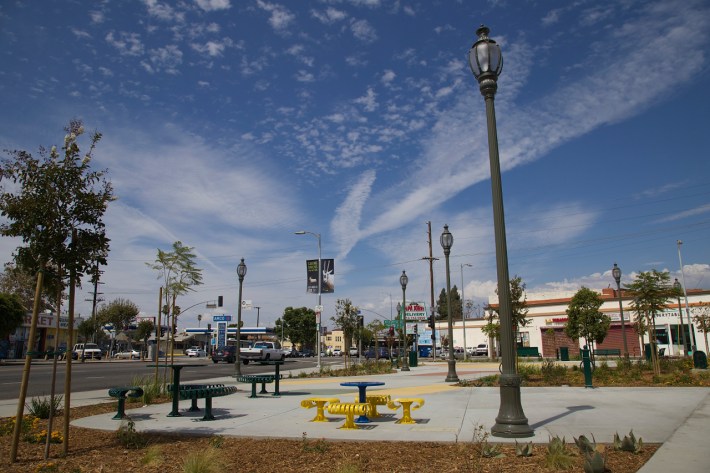
At the groundbreaking, those involved in the project spoke of it as a model that could be replicated around the city and touted it as the fruits of what can happen when a community comes together to improve livability.
Revamping the Hoover Triangle in Councilmember Gil Cedillo's Council District 1!
— LA CityView35 (@LACityView35) September 8, 2017
Cameraman: Roland Luna@gilcedillocd1 @gilcedillo pic.twitter.com/6fuAwjCKLN
It wasn't until the day after our story dropped, when councilmember Gil Cedillo responded to someone concerned about the lack of shade, that mention was made of tackling the shade issue in a second phase of the project.
This is the first phase of the project, shade will be a part of the next stage
— Gil Cedillo (@cmgilcedillo) September 12, 2017
To the district office's credit, they have tackled it in spades.
This is the same view as the photo above.
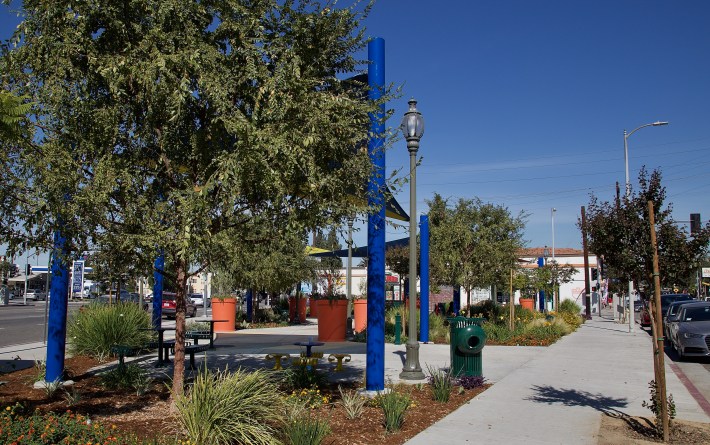
The four mature trees planted this summer were complemented with a range of drought-tolerant flowering plants and grasses.
The installation of two shade structures helped make the triangle feel much more spacious than it actually is. So did the placement of tall planters around the edge of what is described as a performance space.
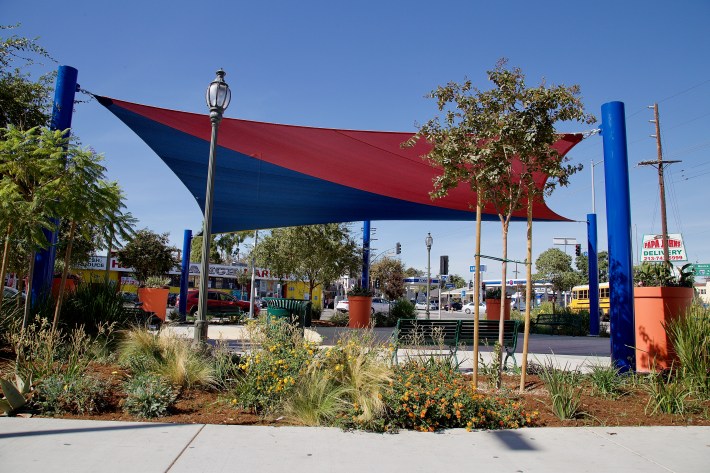
It's a quality glow-up.
And given that I see area residents relaxing on the benches there every time I roll through, it appears that the plaza is finally functional, too.
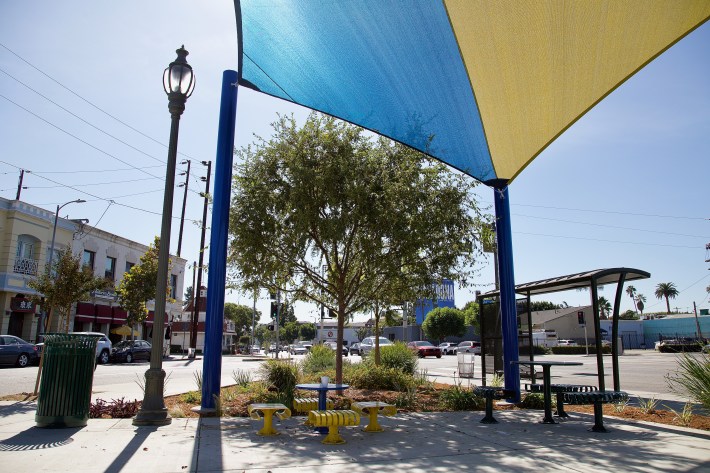
It just would have been great - and likely more cost-effective - if this kind of investment and attention to community needs had been made from the outset. Especially since those surveyed during the planning process had ranked shade first among their asks.
